Pico - Climbing The Highest Peak of Portugal
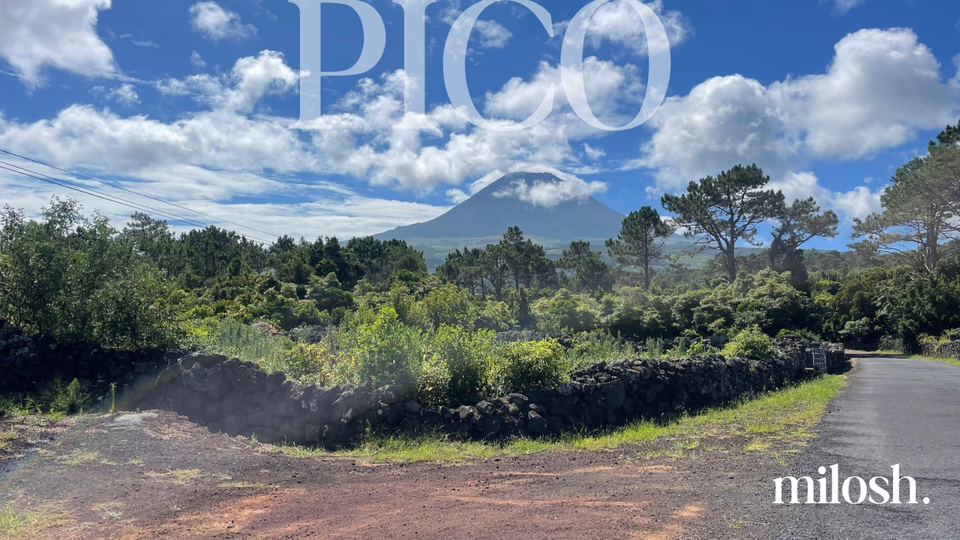
Montaña do Pico, or simply Pico, translates to "Peak" in English. The Portuguese may not have been the most creative when naming their highest peak, but they certainly picked one of the most picturesque in Europe. Pico, also known as the "Black Island," is the youngest of the Azorean archipelago. It’s renowned for its vineyards, volcanic landscape, and the majestic mountain capped by Piquinho. This mountain, which rises from an incredible 6,000 meters below sea level, offers views better than anywhere else in the Atlantic. Apart from being the highest peak in Portugal, it’s also the highest peak of the Mid-Atlantic Ridge, a tectonic boundary that separates the Eurasian and North American plates.
Read about the few days I spent on this island, the wine I tasted, and the hike to conquer this monumental mountain.
What is Pico?
Pico is a volcanic island that formed around 300,000 years ago, making it one of the youngest in the Azores. It is home to approximately 14,000 people, most of whom are involved in agriculture, particularly viticulture. Pico’s vineyards, a UNESCO World Heritage Site, are famous for producing a unique wine that thrives in the island's volcanic soil. Tourism in Pico is growing but remains closely tied to nature and sustainability. The Azoreans take a mindful approach to tourism, focusing on protecting the island's natural beauty and heritage. Pico attracts adventurers, especially hikers eager to climb Mt. Pico, with about 15,000 tourists climbing the mountain each year. The island is a shining example of sustainable tourism, with a focus on preserving its unique environment while allowing visitors to explore its wonders.
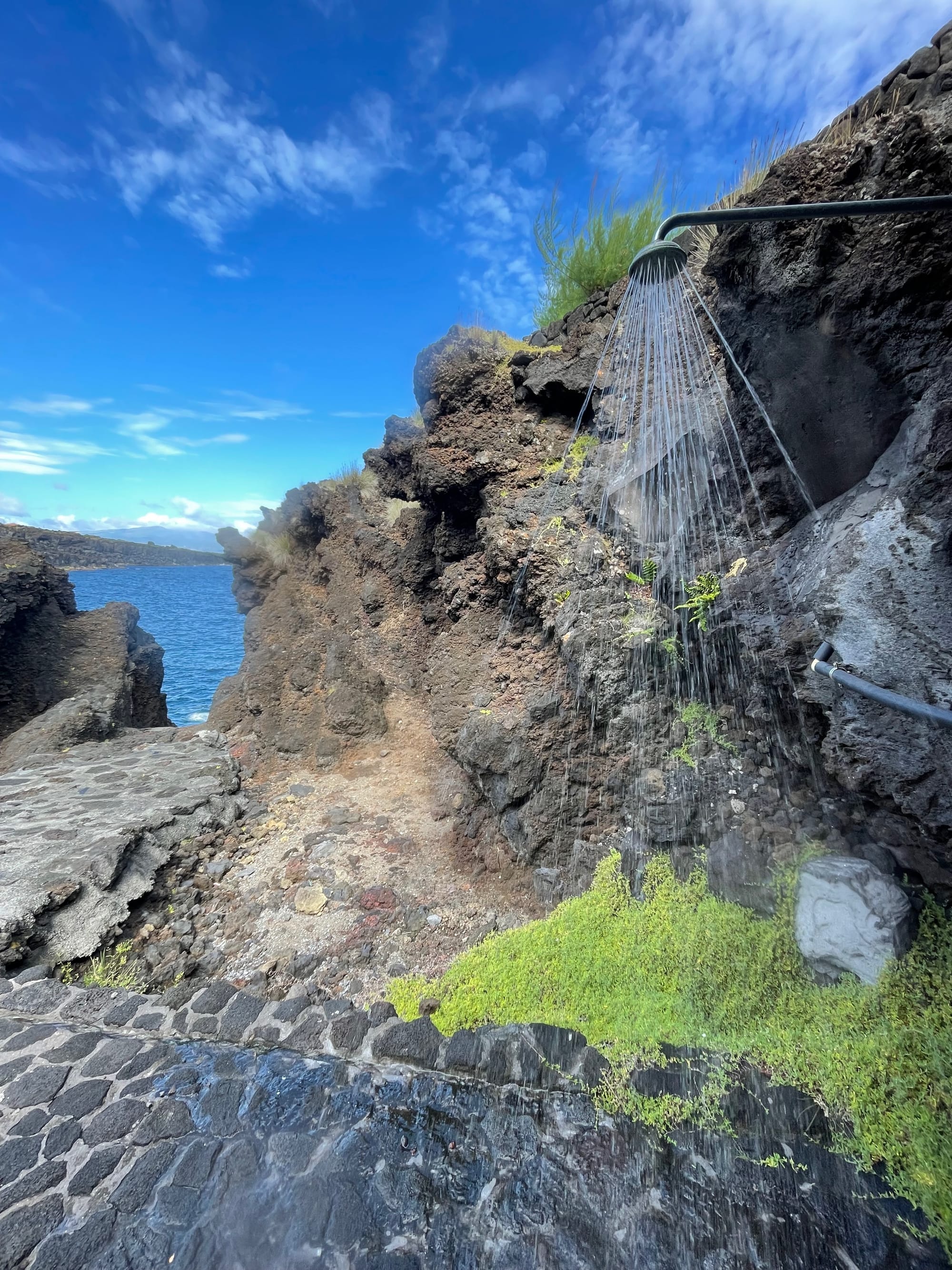
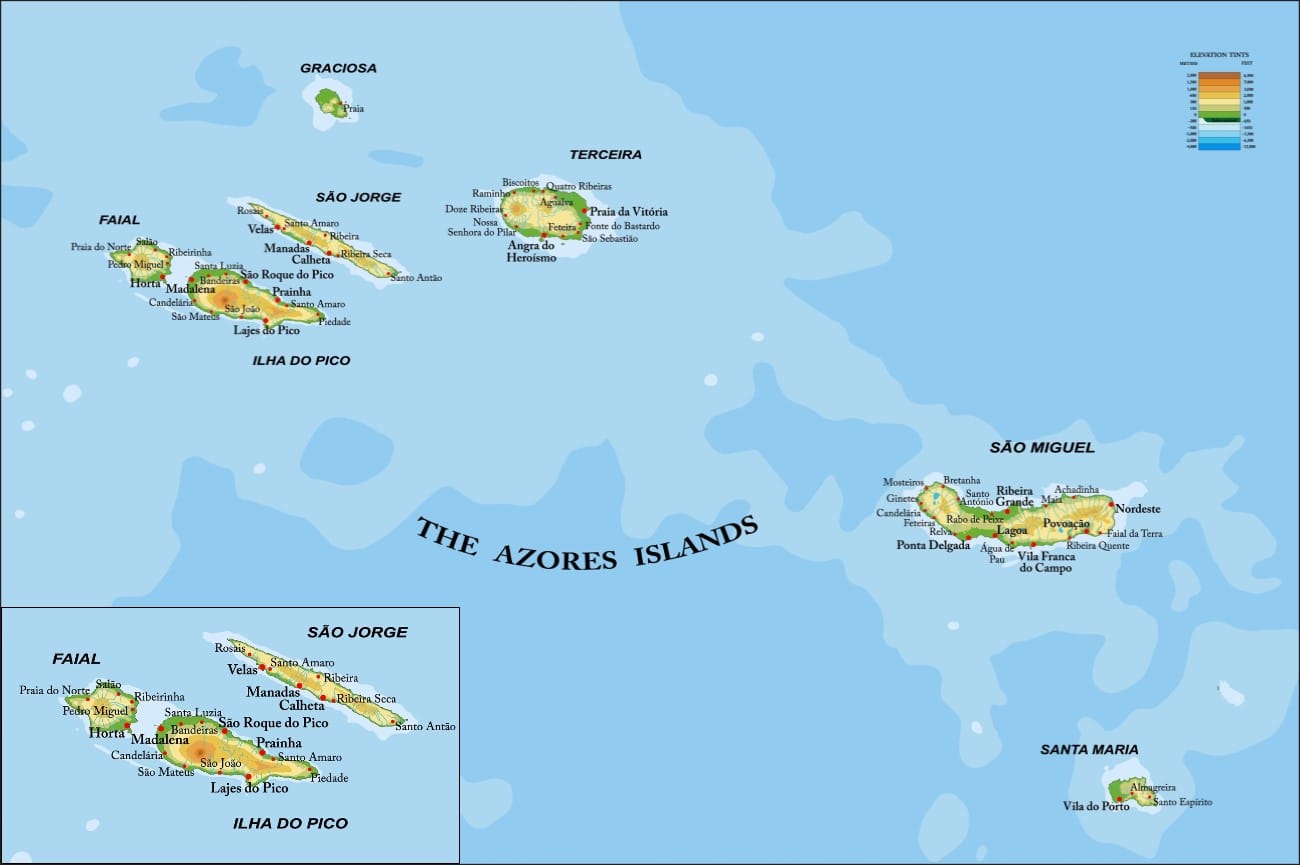
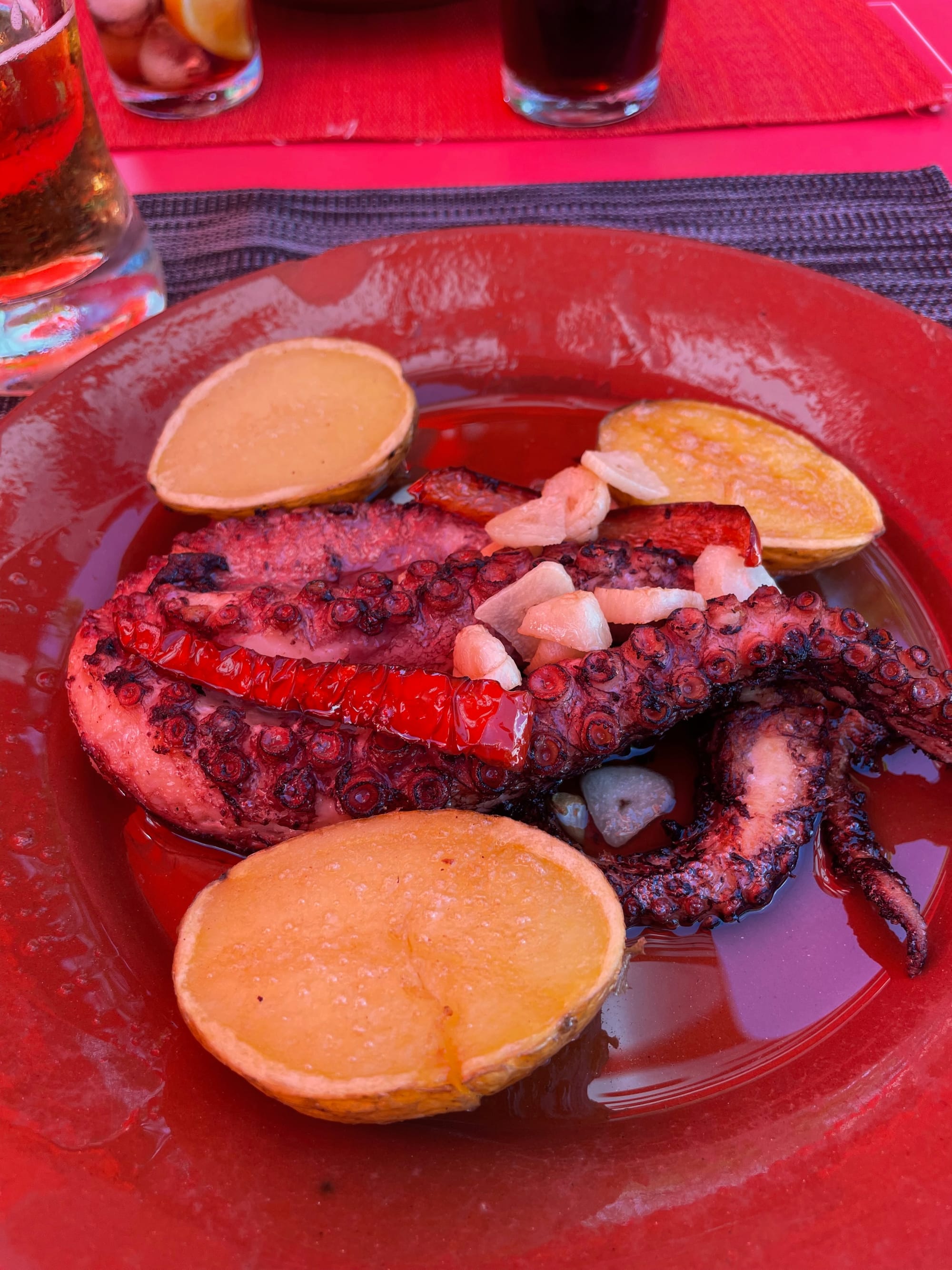
Pico & its perks.
Getting to Pico
The only way to get to Pico from São Miguel, the largest Azorean island and the one I reside on, is by flight. Azores Airlines/SATA operates this route daily, and the flight is short, less than an hour, offering stunning views of neighbouring islands like São Jorge and Pico itself.
Pico’s location in the central group of islands makes it a fantastic base for island-hopping. You can easily ferry between Terceira, São Jorge, Faial, and Pico, which is a major draw for outdoor enthusiasts. Each island has its charm, and ferry travel offers a scenic and leisurely way to explore the Azores. Many visitors use Pico as a starting point for exploring the region, with its central position allowing access to multiple islands.
We planned our trip to see Pico and Faial before flying out to Corvo and Flores. The main motivation to visit Pico was obvious – to climb that towering mountain. Standing at 2,351 meters, Mt. Pico offers an exceptional experience, beginning from deep under the ocean. Climbing the highest peak in Portugal wasn’t the main focus of our trip, but it provided a great side quest. Lukas and I left São Miguel early, deciding to play things by ear. A word of caution to those planning a Pico hike:
1. The weather is unpredictable,
2. There are a limited number of permits issued each day for climbing. The weather in Pico often changes rapidly, and clear days are rare. Typically, around 160 permits are issued per day, so it’s crucial to arrive early if you want to secure one.
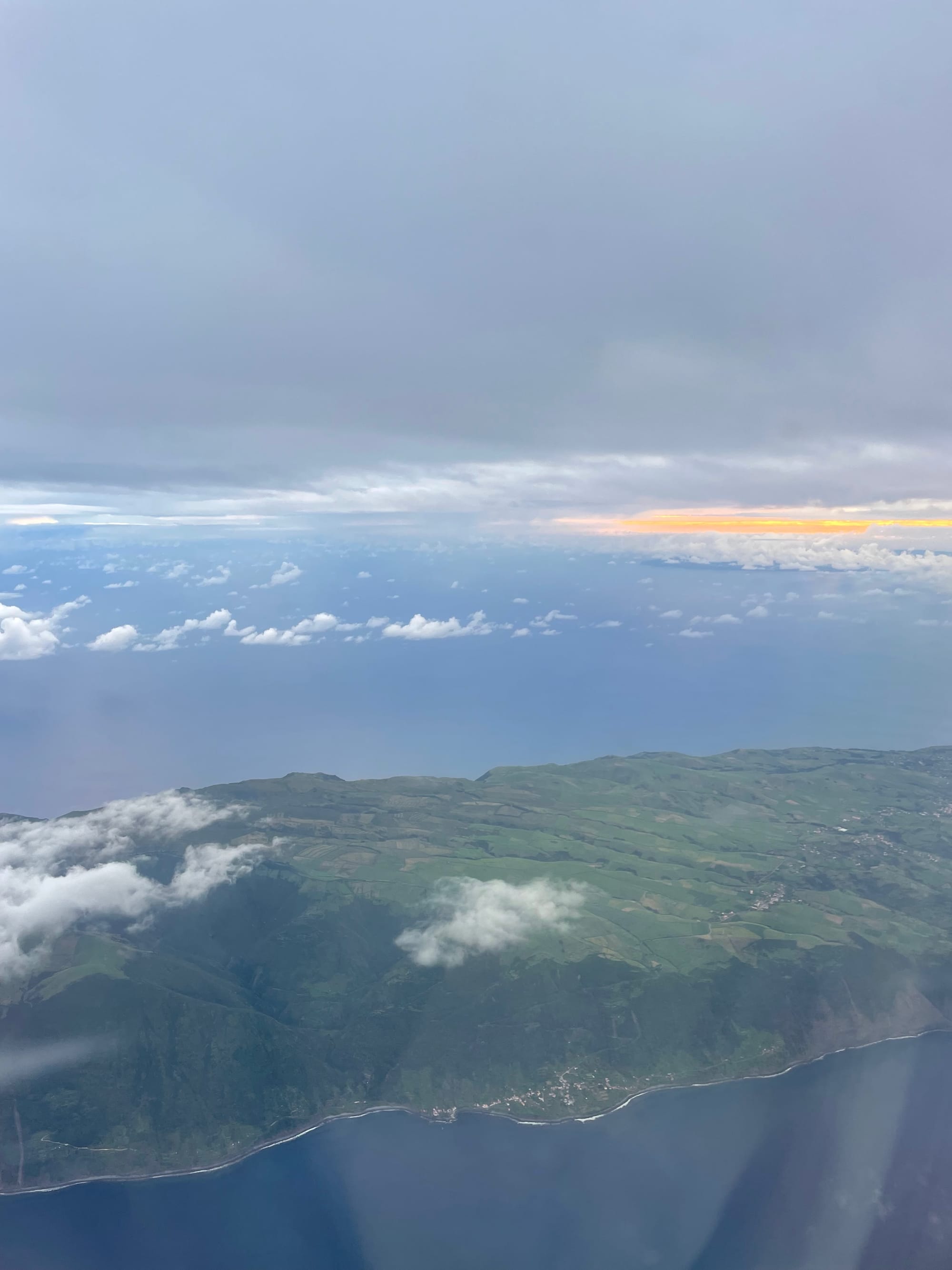
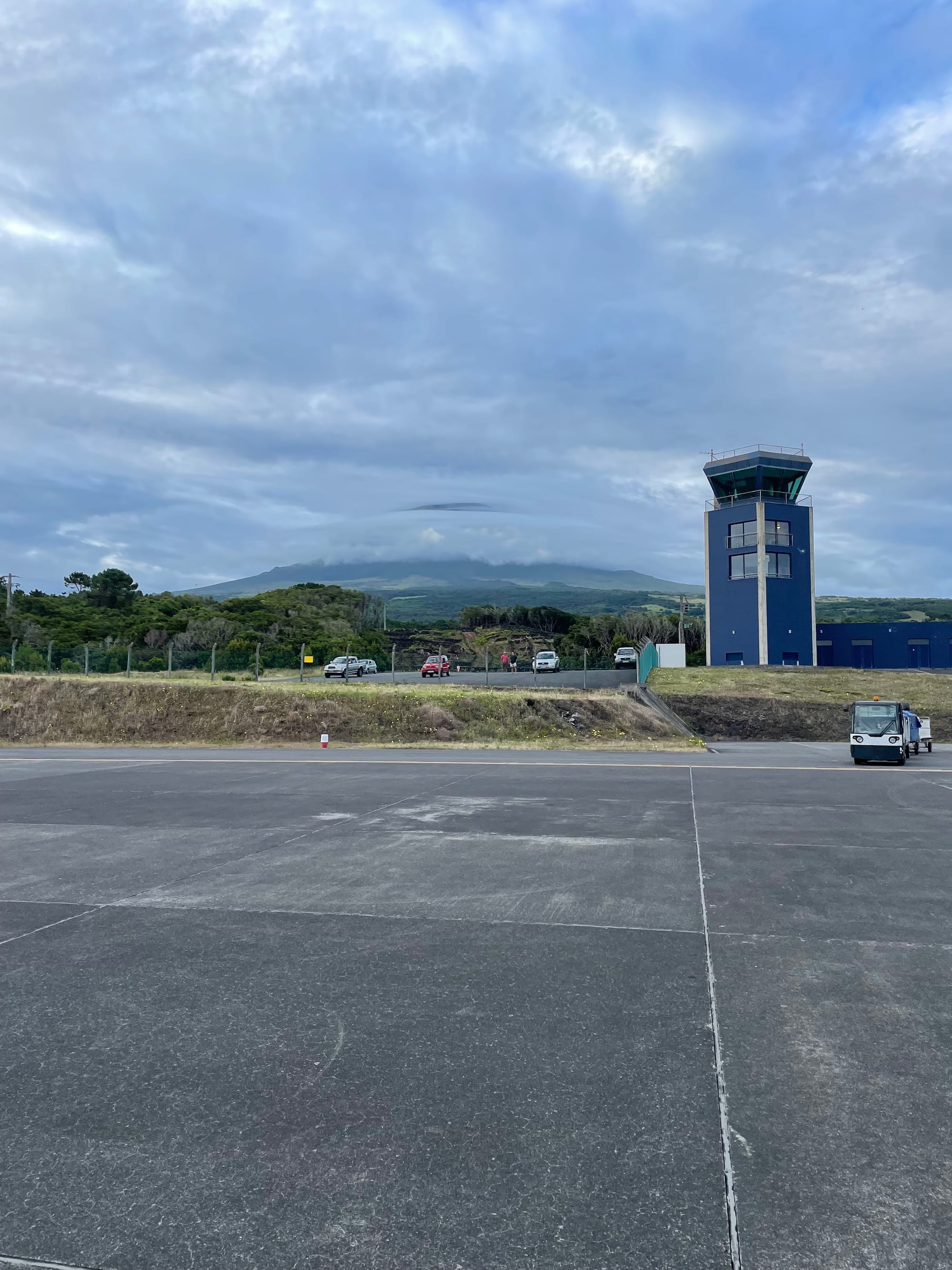

Early morning flight over São Jorge with Terceira in the background. First steps led into local pasteleria.
After touchdown, we had no concrete plan. So, after a good (early by Portuguese standards) breakfast, we rented scooters and set out to explore the island, determined to maximize our two days on Pico and secure a shot at climbing the peak.
What a splendid idea that was! Pico is sparsely inhabited, with much of its surface covered in vineyards and farmland. The island is also famous for its excellent whale-watching opportunities, as the deep waters surrounding it attract numerous species of whales and dolphins. Additionally, Pico's natural pools provide some of the most scenic swimming spots imaginable. Diving into the pristine Atlantic, surrounded by volcanic formations, was a memory I’ll hardly forget.
Throughout the day, we rode around the island, taking in occasional glimpses of Pico, which remained mysteriously shrouded in fog. The island is known for its distinctive fog cap that often envelops the mountain. This fog is a result of the island's high altitude and the surrounding ocean, which creates humid conditions that lead to frequent cloud cover over the peak.
We ended the day with a relaxing swim and dinner and headed back to the hotel early to prepare for the hike. Despite our best efforts, Pico was still hidden behind its blanket of clouds.
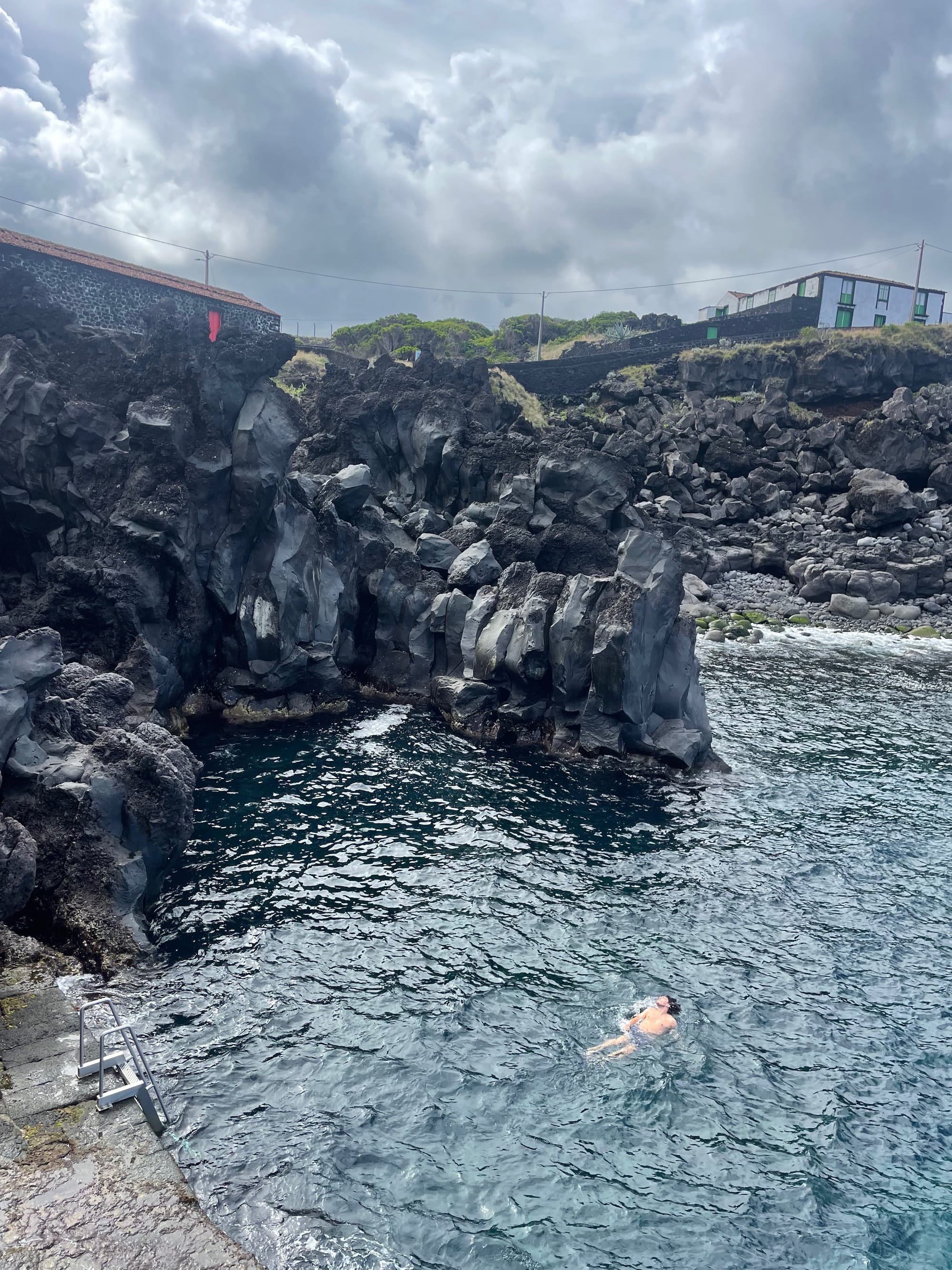
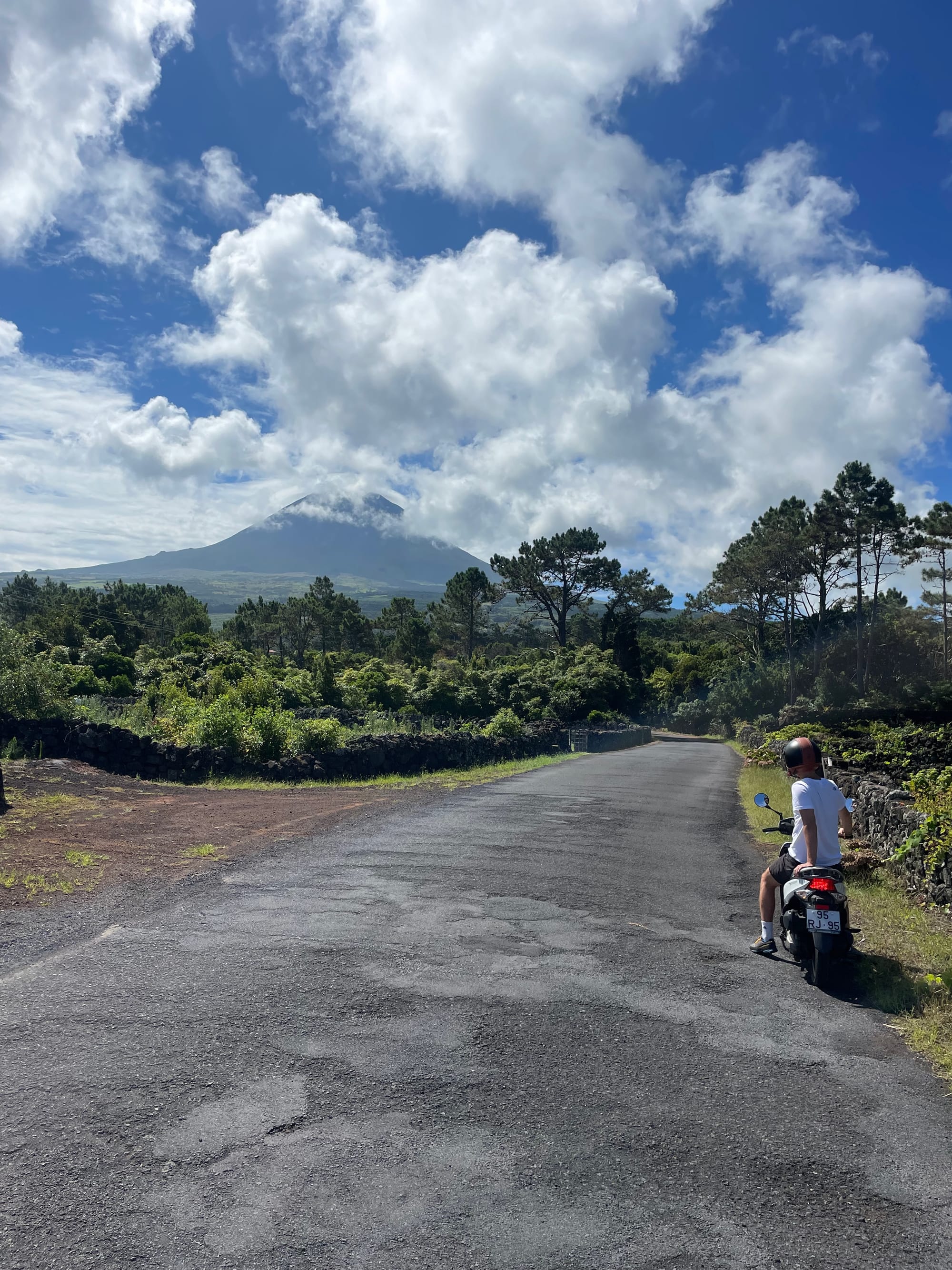
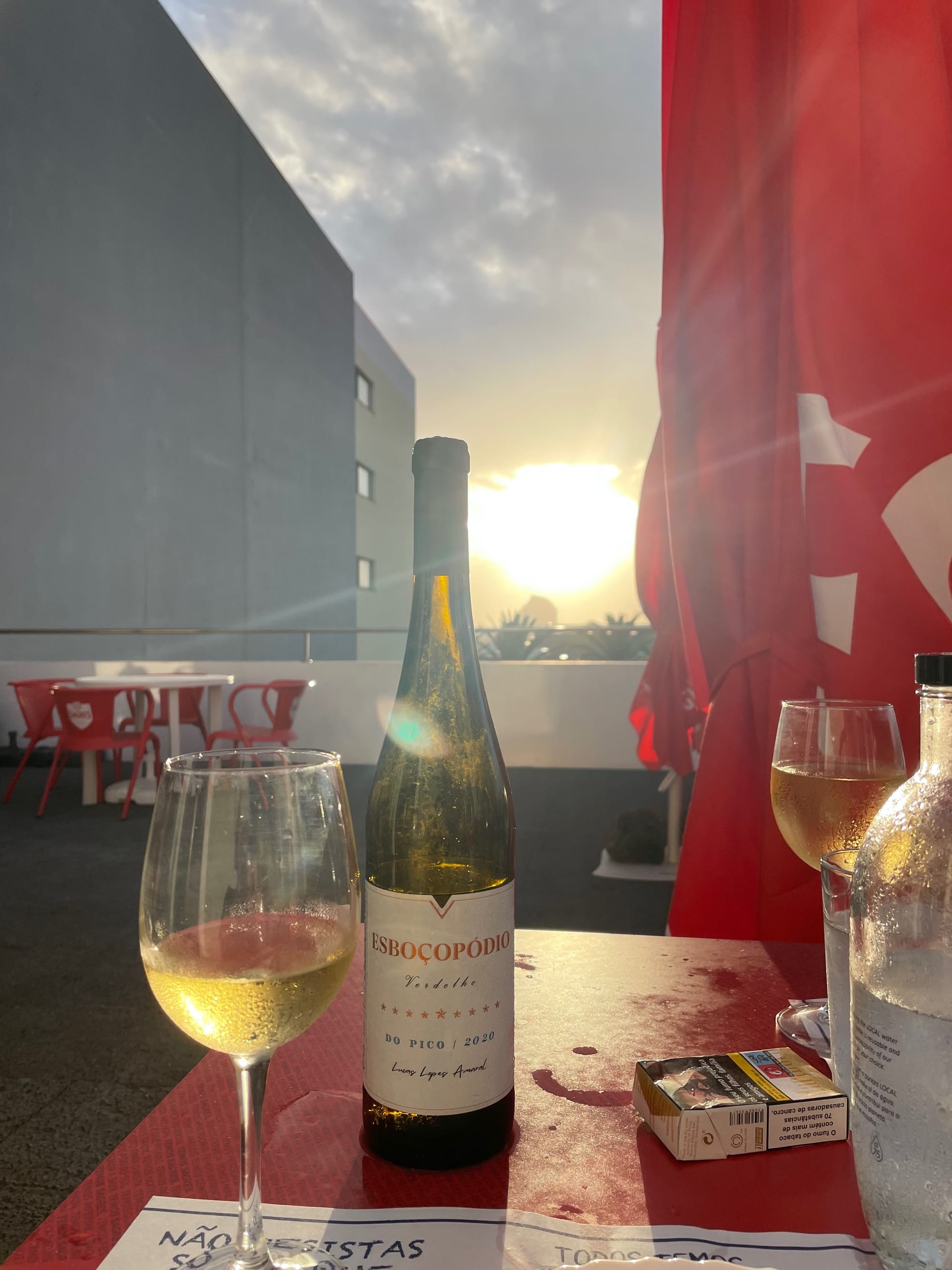
Whatever view of Pico we got, it was always covered in the clouds. Verdelho - grape from Pico.
Hiking Pico
The forecast for the next day looked promising, so we decided to give it a shot. We knew we had to be up early to get a permit, so we called a cab for 4 AM, determined to be among the first in line. The permit process for Pico is fairly straightforward: permits are limited, and some people who show up early without reservations can secure one on the spot if others cancel. It’s a bit of a gamble, but worth it.
After securing our permits, we hit the trail, which felt like a vertical elevator as it climbed toward the sky.
The hike to Pico is around 8 kilometres in total(both ways), with a steep elevation gain of over 1,100 meters. We started the hike in the dark, using headlamps to light the way, but as the sun rose, we turned them off and were rewarded with a breathtaking view of neighbouring Faial Island showing its beauty to us through the clouds.
As we ascended, the weather grew more unpredictable, with fog and wind increasing as we neared the summit. The trail became steeper, and the rocky terrain gave the hike a surreal, almost lunar quality. Finally, we reached the crater, where we met a few brave campers from the previous night. The final stretch up to Piquinho, the highest point, was more of a scramble than a hike.
Piquinho itself is a small volcanic cone that crowns the mountain. The crater at Pico’s summit is rugged and rocky, and the last bit of the climb requires a good deal of care.
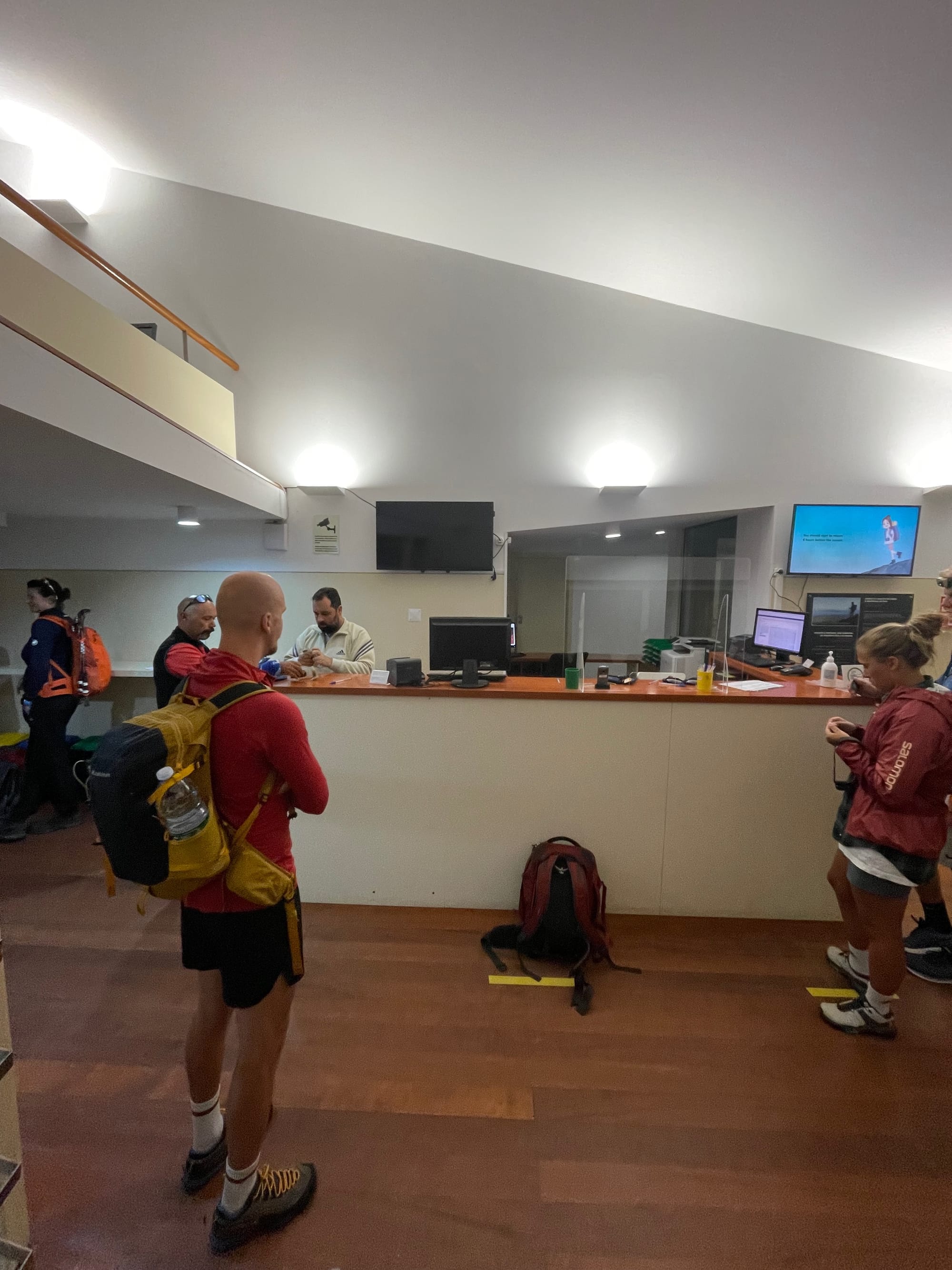
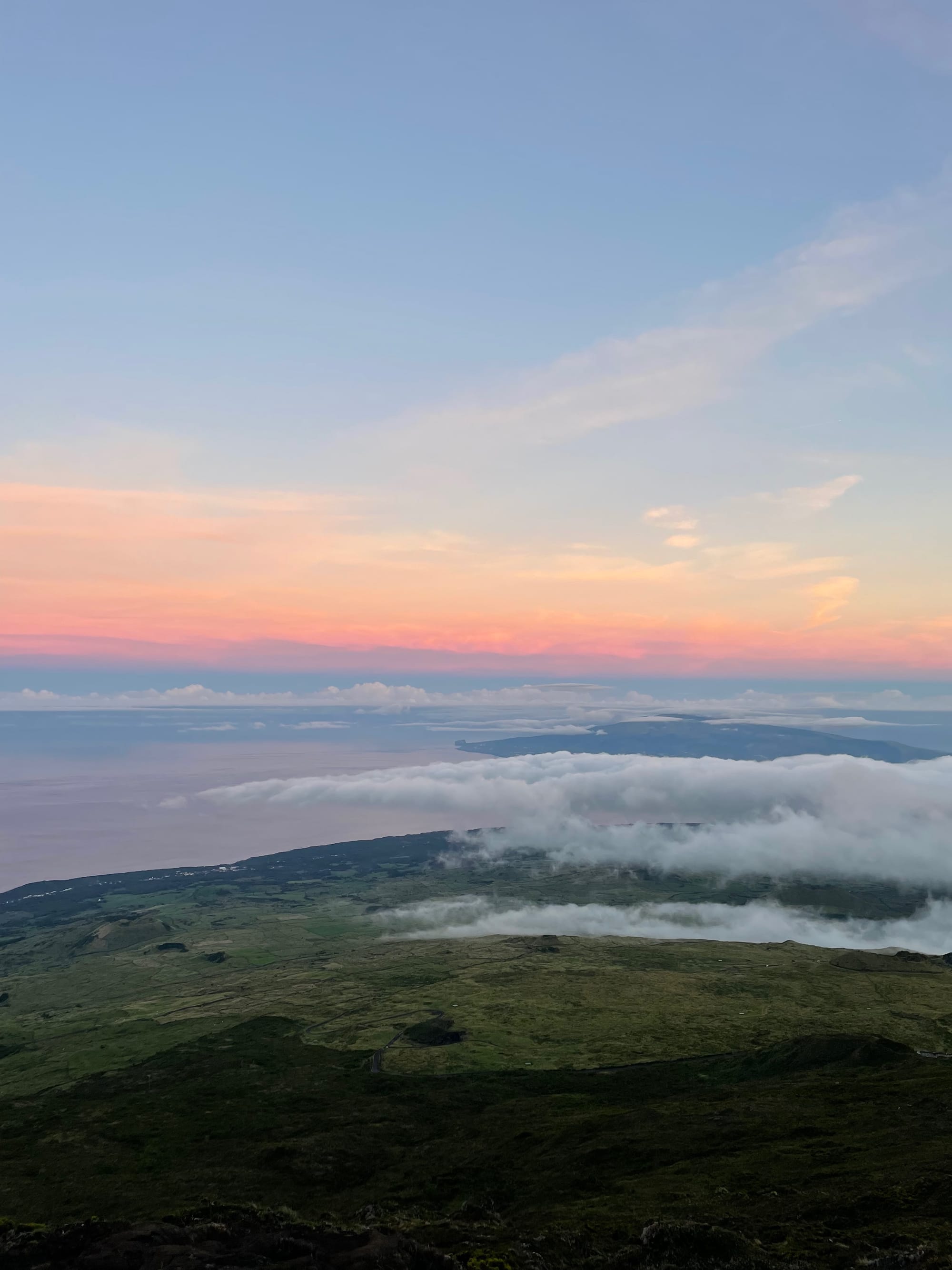
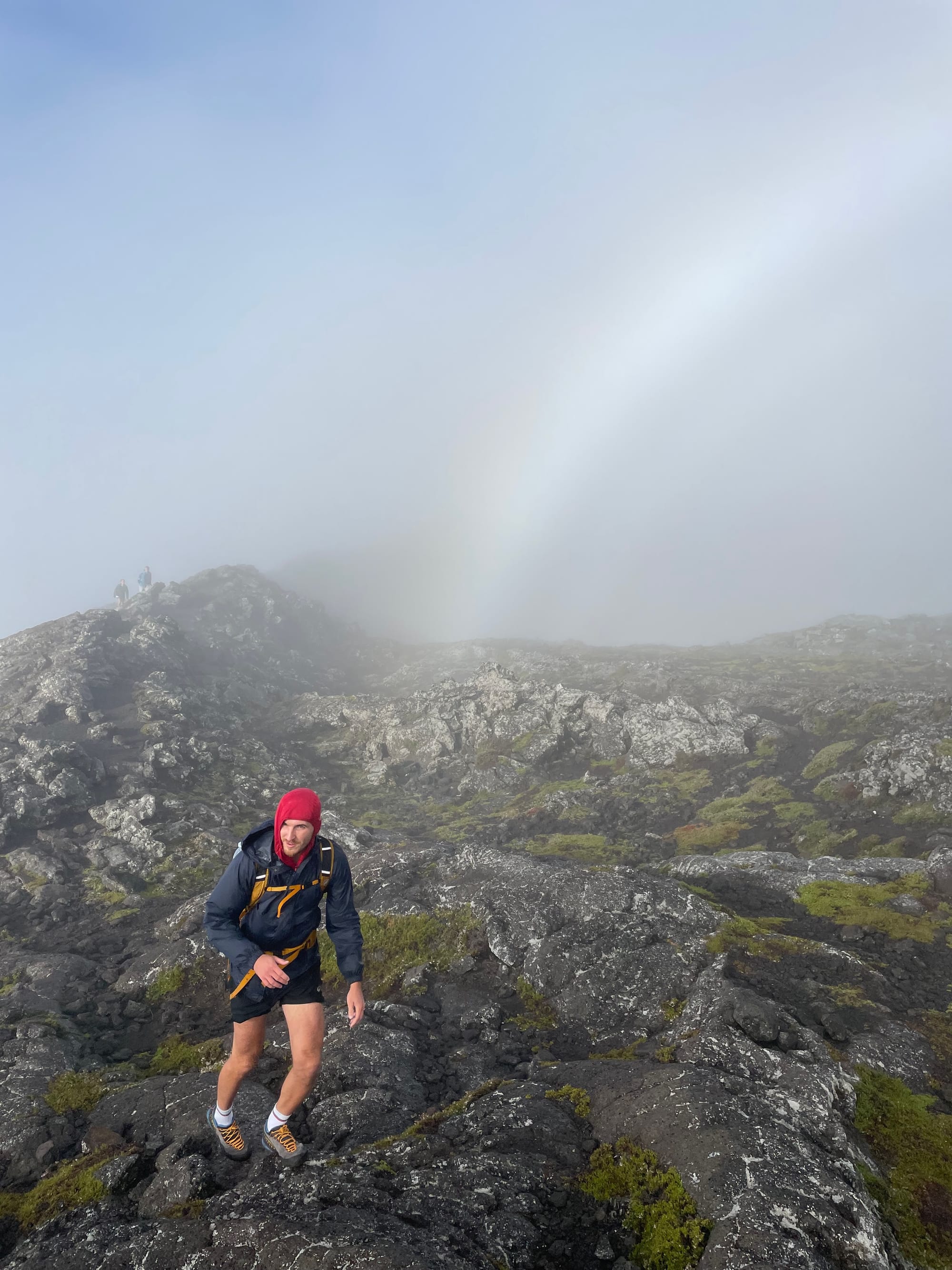
Hiking up Pico
As soon as we got to the ridge, I got the magical sight of "specter". In the context of the mountains, it carries a mystical message.
In Slovakia, we have a mountaineering saying:
The first sighting of a specter means 'the mountains are welcoming you. The second sighting – 'the mountains are warning you' & the third – 'the mountains love you.
This was my very fist sighting of a specter.
As we reached the top, we had 5 minutes of interrupted views of the clouds. We were up there, on the highest point of Atlantic, above all the clouds. Noone in the entire ocean stood higher than us.
Within 5-10 minutes a cloud took all our glory away and we were left with nothing but fog,cloud,wind and occasional sun ray. We shared a protein snack - Eastern Slovakian "klobasa", to regain our energy back.
We have not said much. We were both content. Greatful to be able to travel. Happy to be healthy enough to move our bodies up the mountain. And Over the moon that we have just reached the highest freaking point of the Atlantic.
That does not happen often, if ever.
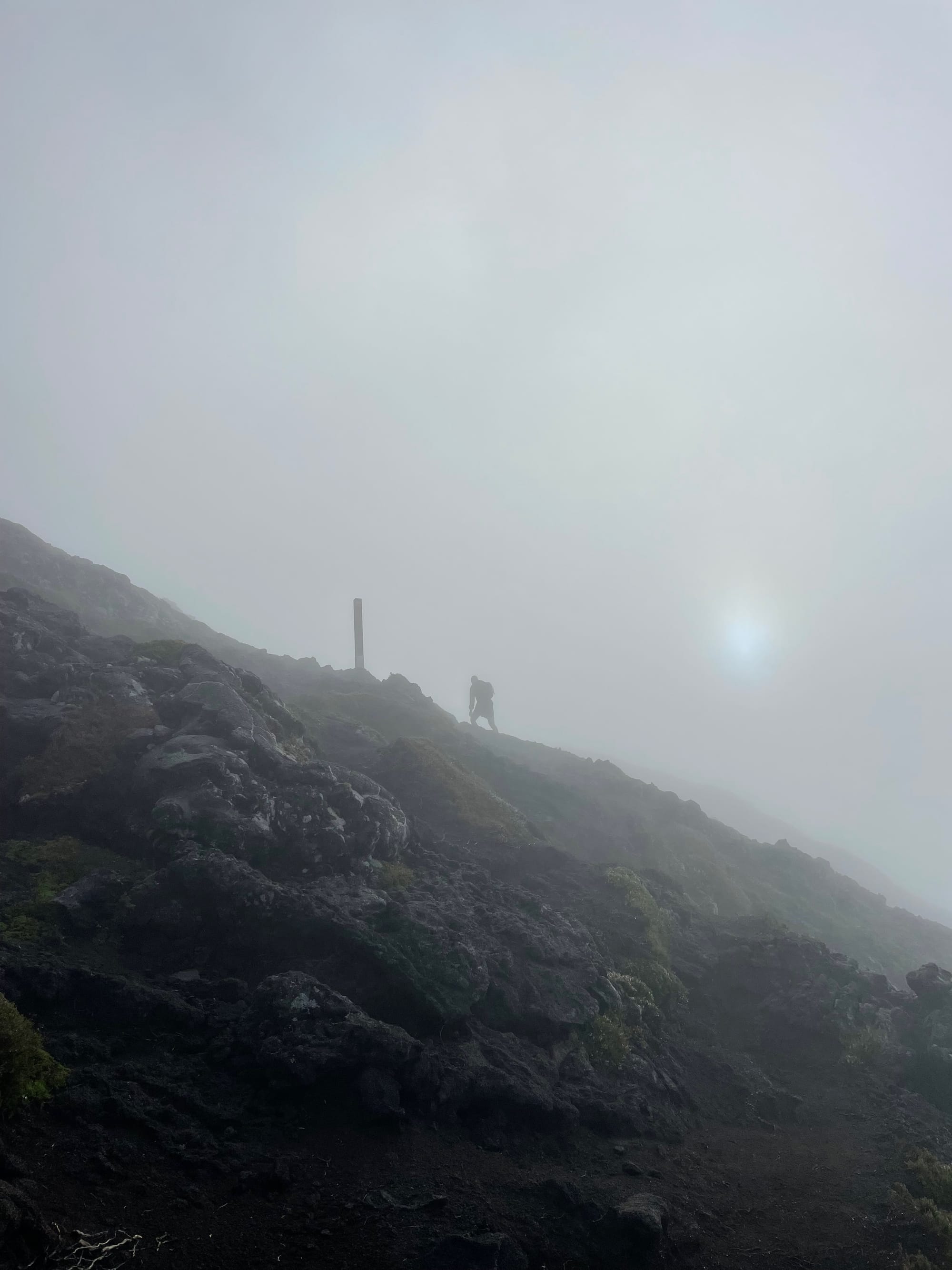
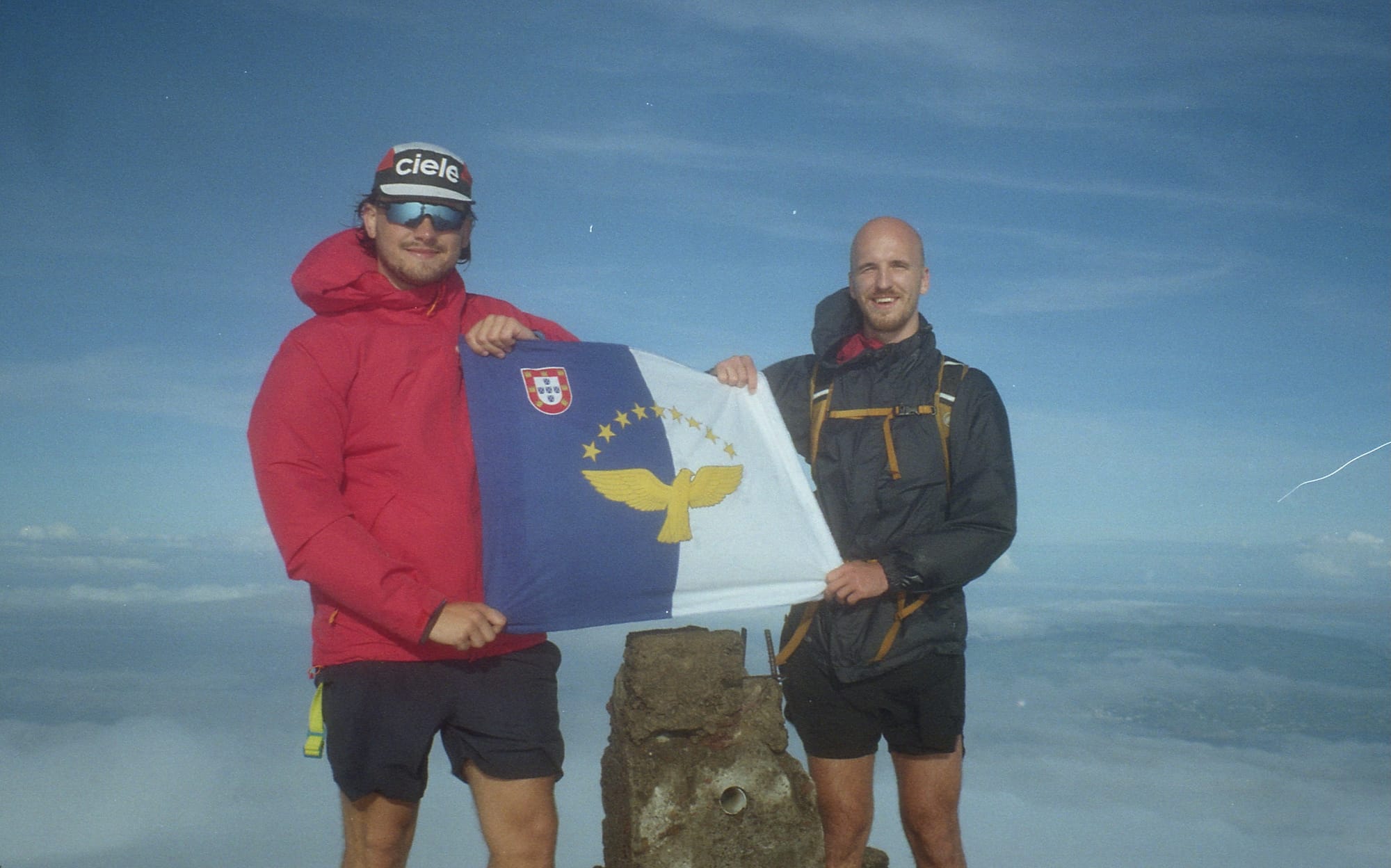
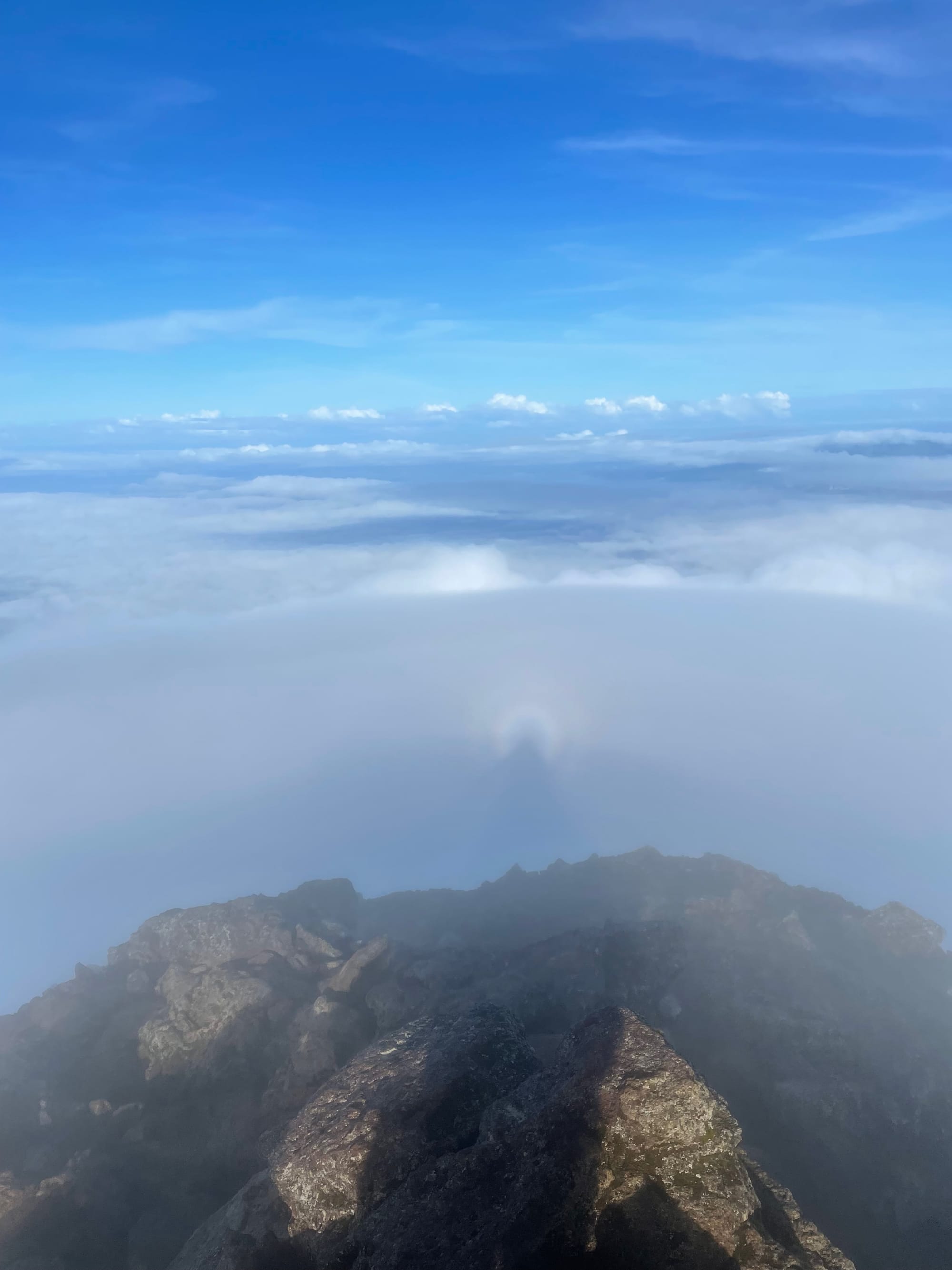
On top of Pico + the magical "specter"
